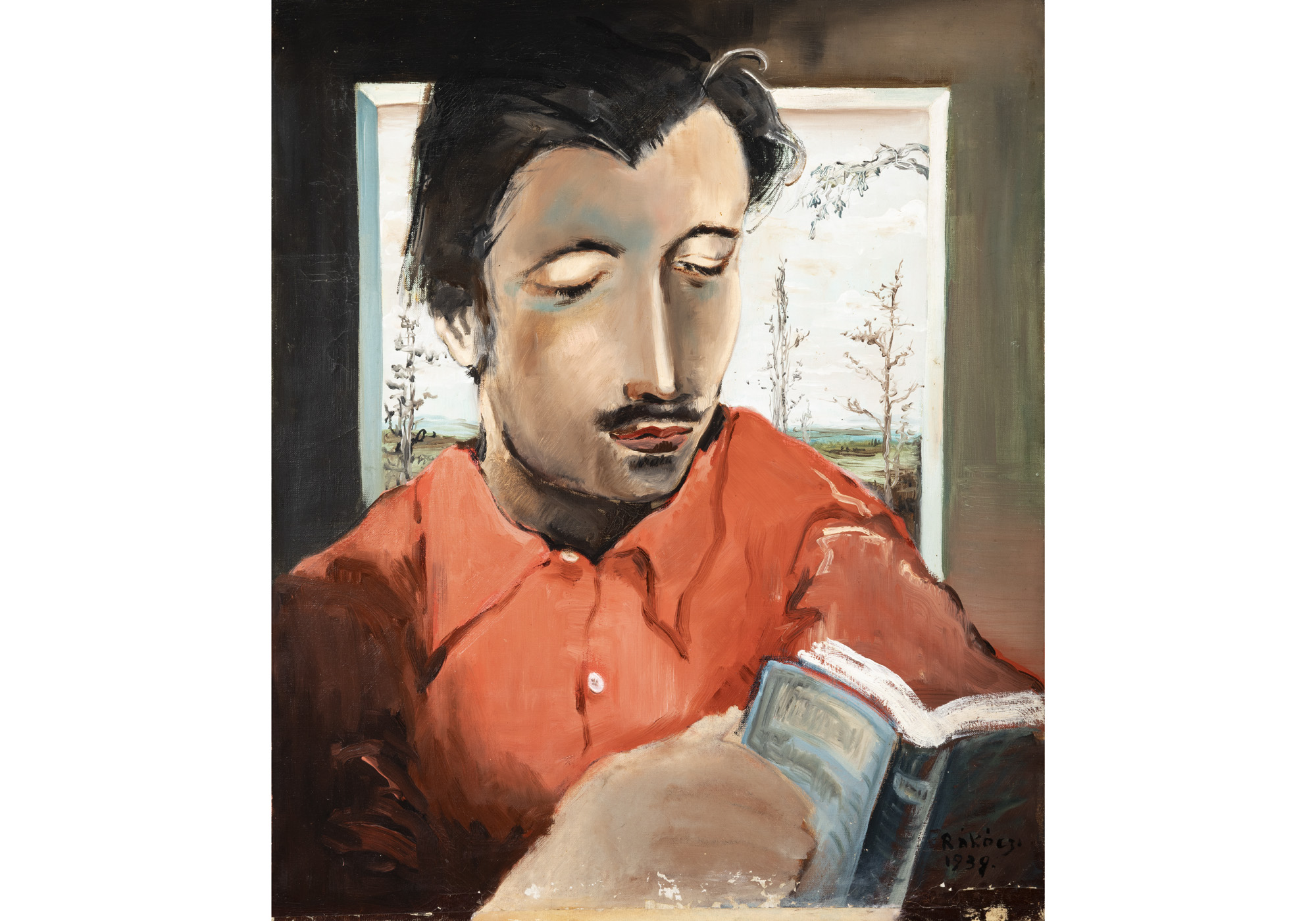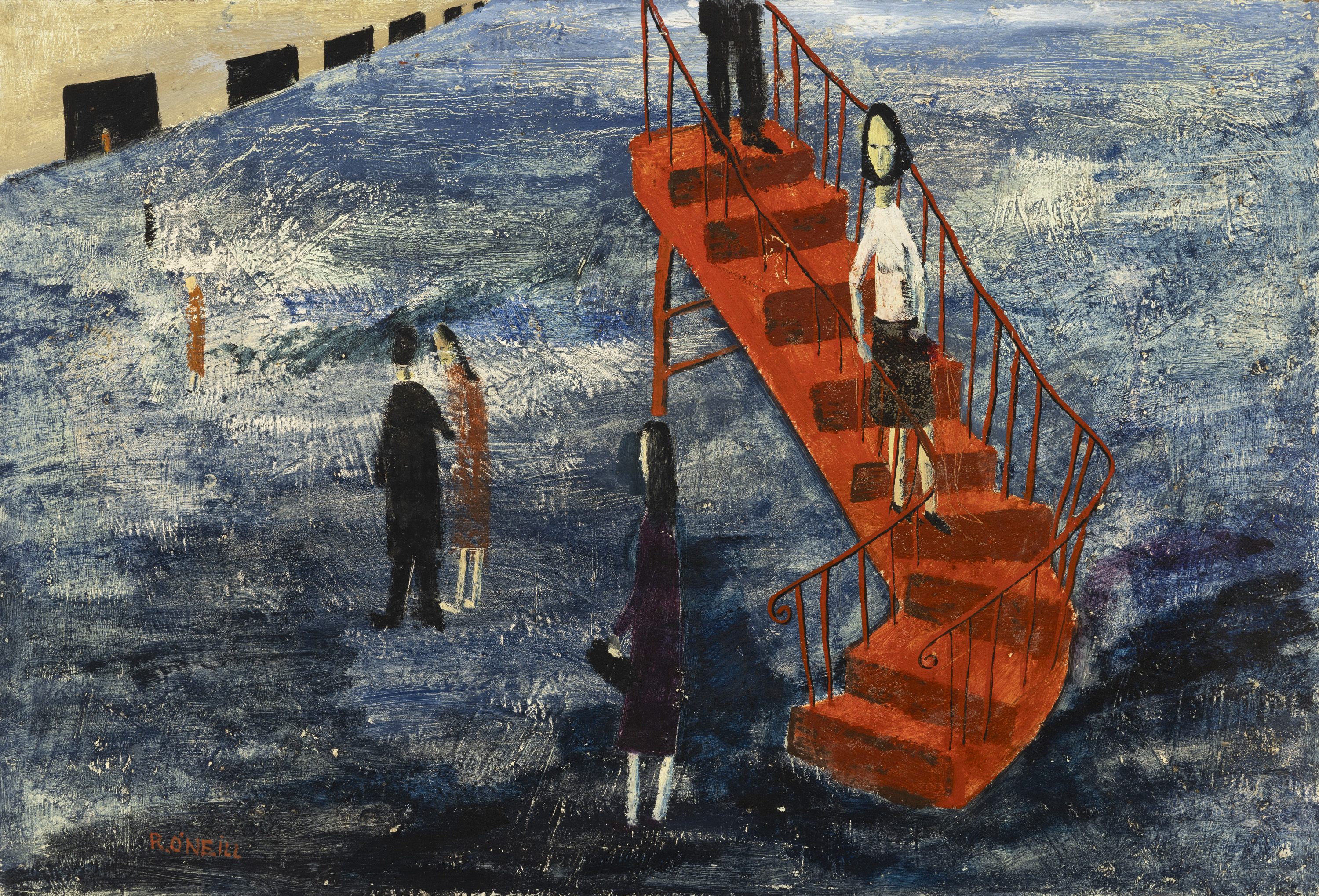Departments
.svg)


Our next auction of ‘Important Irish Art,’ will take place later this month on March 30th. Amongst the many the recognisable best-selling Irish Artists are Jack Butler Yeats, Mainie Jellet, Colin Middleton, Donald Teskey, Norah McGuinness, Gerard Dillon, to name a few.
At the top of the ticket is a wonderful work by Roderic O’Conor 'Marine au Claire de Lune' (Lot 44), its provenance with Hotel Drouot, Paris, Vente O’Conor, 7 February 1956 and Musée de Petit Palais, Geneva. The painting is estimated to sell at upwards of€150,000.00.
In our Auction Catalogue, Johathan Benington writes:
“Roderic O’Conor had been living and working in Pont-Aven, Brittany for nearly three years when he met Gauguin in 1894, recently returned from his first trip to Tahiti. A friendship formed, and it is clear from Gauguin’s letters that he was expecting the Irishman to accompany him on his return to the South Seas. Although O’Conor declined, the relationship had a far-reaching effect on his life and his art: “… Gauguin’s strength of character and convincing style of talk made a deep impression on the young, or youngish, Irishman…” (Clive Bell, Old Friends, 1956, p. 166).
Further to Gauguin’s final departure from France in 1895, O’Conor embarked on a group of nocturnes inspired by the scenery around Le Pouldu on the southern coast of Brittany, and the riverside town of Pont-Aven, 25 kilometres inland. The theme first emerged in an etching, Full moon on the coast, and was then developed in several moonlit seascapes painted in gouache, as well as a handful of oil paintings including The bull and the moon and A moonlit Breton Landscape (Benington 1992, p. 199, nos. 81 and 84). These artworks stood apart from O’Conor’s earlier Breton landscapes on account of their greater reliance on the imagination, as if conceived from memory rather than direct observation.
In Marine au clair de lune we see a clifftop house with a light shining in its windows, overlooking a sailing ship caught in the reflected path of the full moon, a glowing orb half hidden by a cloud at the top of the composition. The close juxtaposition of land and sea, safety and uncertainty, may be are collection of the house at St Julien, a hamlet of Le Pouldu situated at the mouth of the Laita river, where O’Conor had stayed with his friend Armand Seguin in 1893 and, two years later, the two of them watched as Gauguin spontaneously composed an etching. Writing to Seguin four years later, O’Conor revealed that he had plans for a picture of St Julien, perhaps identifiable with the present work. One of its most striking features is the way its dreamlike quality has been given substance through technical innovation: O’Conor has applied his colours very thickly, making extensive use of the palette knife in order to obtain a richly textured surface. The granular effect of this build-up of pigment is particularly suited to capturing the glimmer of light on the water surrounding the two-masted vessel.
Like most of his other moonlit pictures, the present work was most probably begun during the years 1895-98 when O’Conor was living in comparative isolation at Rochefort-en-terre, a hilltop village in the heart of rural Brittany. Unable, or unwilling, to accompany Gauguin to Papeete, he may have chosen this location because it was less visited by artists and tourists than Pont-Aven, more authentically Breton in its preservation of time-honoured religious and cultural practices. Here he had the space and freedom to experiment with new ideas, notably Gauguin’s dictum that the remembered image was a more effective embodiment of ideas and emotions than the observed one. By relying to a greater extent on his memory and imagination, O’Conor arrived at a range of themes that were uniquely personal to him.
The mystery of a work such as Marine au clair de lune lifts it onto a Symbolist plain, recalling O’Conor’s association with writers such as Alfred Jarry, Léon-Paul Fargue and Charles Morice. And like Wordsworth who defined poetry as emotion recollected in tranquillity, here O’Conor seems to evoke the experiences that had meant the most to him just a few years earlier – moonlit walks, the proximity of the sea and windswept cliffs, the stimulating company of fellow artists, and a warm house to return to at the end of the day.”
Jonathan Benington




Through this article, let our expert Adam Pearson guiding you to the (re)discovery of the once established Irish painter Richard O’Neill.












Buying at Auction and the Role of Antiques in a Modern Home




Important Irish Art Auction Highlights

Oliver Dowling Collection by Aidan Dunne




2024 is a year in which Adam’s wants to recognise the key role buying antique furniture and furnishings at auction contributes greatly to the sustainable initiative. In 2019 the Environmental Protection Agency reported stark figures that each year in Ireland 1.2 million reusable bulky items, primarily furniture goes into landfill. Similar to the problem of ‘fast fashion’, the constant production and consumption of new items is leading to rapidly growing waste problem. We want to acknowledge those who are already buying second hand or antique furniture at auction and to encourage new buyers by highlighting the benefits of acquiring affordable, well-made quality items that are built to last.







Irish author, recipe creator and lifestyle influencer, Indy Parsons, selects her favourite pieces from our upcoming Fine Jewellery & Watches auction










.jpg)

Cork-born Irish actress, Sarah Greene, selects her favourite pieces from our upcoming Fine Jewellery & Watches auction




Yvonne Aupicq had met Orpen, we understand, while working as a nurse during the war. He had been admitted to hospital with a suspected case of scabies which ended up being a far more serious case of blood poisoning as he recounts in his wartime memoir ‘An Onlooker in France’. Their relationship continued after 1918 when Orpen was appointed as the official artist to The Paris Peace Conference. They relocated to capital and over the following decade he painted her numerous times, often nude as in Amiens 1914, or The Rape and Nude Girl Reading (1921). Working with her as his model during these early years after the war allowed Orpen an opportunity to re-fuel his creativity.






Editor-in-Chief of IMAGE Publications, Lizzie Gore-Grimes, selects her favourite pieces from our upcoming Fine Jewellery & Watches auction

Our upcoming Fine Jewellery & Watches auction on September 13th features a prime example of Van Cleef & Arpel's renowned 'Mystery Setting'


Our June auction offers a once-in-a-lifetime opportunity to acquire one of the great masterpieces of Irish art and icons of Dublin’s history.



Georgia Chiesa selects some of her favourite lots in the upcoming Vintage Wine & Spirits Auction


"Beating the bounds is a tradition that can be traced back to the medieval period. At this time, land was divided into parishes and the clergy and church wardens held the responsibility for its upkeep and management. It was up to the Church to ensure that its parishioners knew the local boundary lines and, before maps became commonplace, this had to be kept as a mental record."

Adam’s in conjunction with Suzanne MacDougald are proud to host an online timed auction of artworks to aid the Irish Red Cross’s humanitarian work in delivering vital services to millions of people impacted by the conflict in Ukraine. With no buyers premium 100% of the hammer price will go directly to the Irish Red Cross.

Ros Drinkwater writes of Jack B Yeats' 'The Boat' in the Business Post:

With a consolidated result of €320,000,the At Home sale in Stephan’s Green, was a great success.

